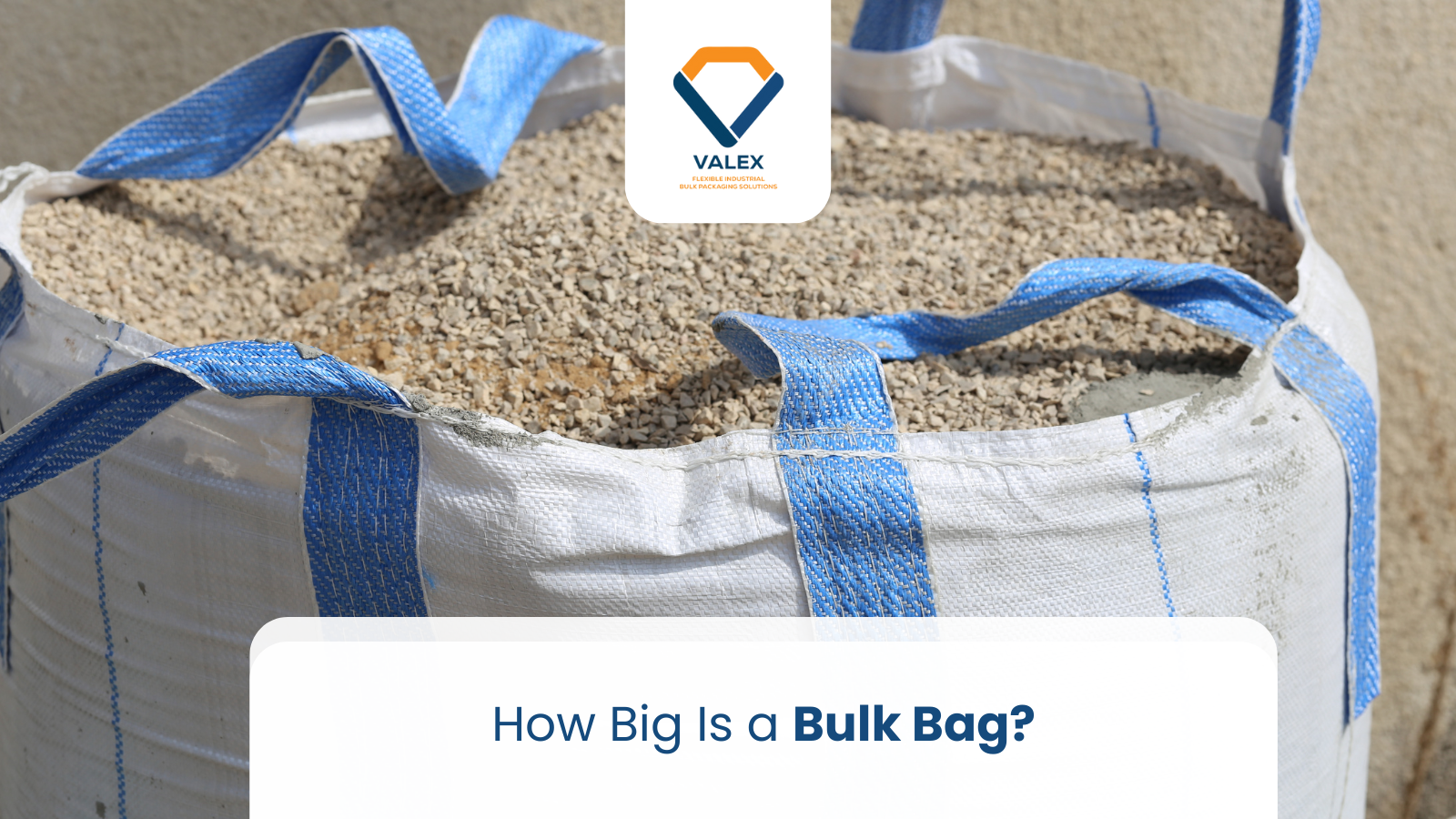Bulk bags, also known as FIBCs (Flexible Intermediate Bulk Containers), have become a go-to solution for handling, storing, and transporting large volumes of materials. From construction aggregates and agricultural grains to industrial chemicals and recycled plastics, these heavy‑duty sacks can carry anything between 500kg and 2000kg in a single lift. Yet despite their widespread use, many people still wonder exactly how big a bulk bag is and whether it will fit their needs.
Here we will try to explain how to calculate volume in cubic metres and weight in kilograms, and show you how many 25kg bags in a bulk bag will fit inside. We'll also compare standard FIBCs to smaller builders bags, so you can decide which option works best for your project. By the end, you'll have the tools to choose the right bag size, match it to your equipment and storage space, and get the maximum value from every load.
Typical Sizes
Most bulk bags are roughly cubic in shape, with side lengths between 90cm and 110cm and heights from 100 cm to 120cm. Common examples include:

These sizes translate into volumes of about 1m³ to 1.45m³, depending on the style of fill spout and how fully the bag is packed.
Custom and Large Volume Bags
If you need more capacity, some suppliers offer bags up to 2 m³. Always verify both empty and filled dimensions with your vendor to ensure compatibility with forklifts, conveyor systems, and storage racks.
A bag's rated capacity tells you how much material it can safely hold. Typical ratings are:
The empty bag itself will weigh only 1 kg to 3 kg, thanks to its lightweight woven polypropylene construction.
How Many 25 kg Bags in a Bulk Bag?
To estimate how many 25 kg sacks you can replace with one bulk bag, simply divide the rated capacity by 25. For example:
This helps you plan orders and understand cost savings when switching from small bags to bulk handling.
Cubic Metre Calculation
Volume is length × width × height. For instance:
Keep in mind that loose or irregular materials may settle differently, so actual filled volume can vary by 5–10%.
Material Characteristics and Fill
Denser powders tend to pack more tightly, filling the bag closer to its geometric capacity. Flaky or granular materials may leave gaps and require slightly larger volume to carry the same weight.
How big is a builder bag?
Builders bags, often used for small‑scale landscaping or home renovations, measure around:
These are perfect for quick jobs but too small for most industrial needs.
When to Use Each
Match Bag to Material Density: Heavy materials like metal shot or chemicals may require a bag with a lower volume but higher weight capacity. Lighter materials like grains or pellets can use larger volume bags.
Consider Handling Equipment: Verify that the bag dimensions fit your forklifts, cranes, or bagging machines. Don't forget to account for the loop height when lifting.
Storage Space and Stacking: Measure your warehouse ceiling height and aisle width before ordering. If bags will be stacked, ensure the bottom bags can support the total load.
Common Uses
Safety Tips
Knowing your bulk bag size and how to calculate capacity and weight ensures you select the right container for your materials and operations.
For reliable, custom solutions contact Valex Ventures, as the best FIBC bag manufacturer, we offer a wide range of bulk bags engineered for strength, safety, and performance. Contact us today to discuss your requirements and get bags built to deliver.
How big is a standard bulk bag?
A standard bulk bag (FIBC) is usually 35" x 35" x 50" and holds about 1 cubic metre or 1000 kg of material.
How many 25kg bags fit in a bulk bag?
A bulk bag can typically hold 40 x 25kg bags, depending on the product's density.
What is the weight capacity of a bulk bag?
Most FIBC bags have a safe working load (SWL) of 500 kg to 2000 kg.
How many cubic metres in a bulk bag?
Most bulk bags hold about 1 cubic metre, though custom sizes vary.
Are bulk bags the same as builders bags?
Yes, builders bags are a type of bulk bag, often used for sand, gravel, or rubble.
Can bulk bags be reused?
Yes, if rated as multi-use (5:1 or higher), bulk bags can be reused under proper conditions.